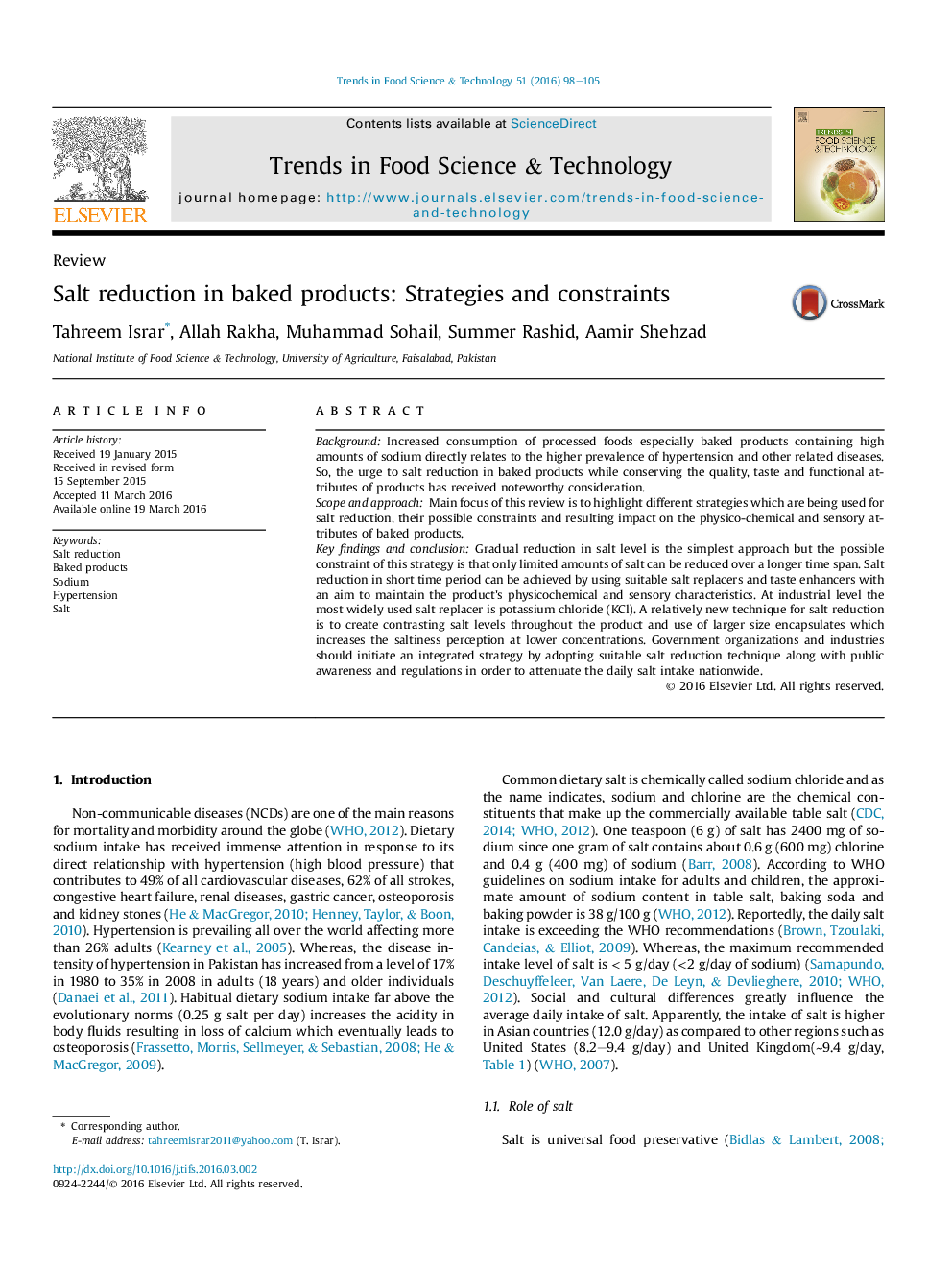| Article ID | Journal | Published Year | Pages | File Type |
|---|---|---|---|---|
| 2098528 | Trends in Food Science & Technology | 2016 | 8 Pages |
•Higher salt consumption is the root cause of various diseases around the globe.•There is a dire need to reduce the salt in processed foods without affecting the quality.•Various strategies can be employed in order to reduce the salt in baked goods.
BackgroundIncreased consumption of processed foods especially baked products containing high amounts of sodium directly relates to the higher prevalence of hypertension and other related diseases. So, the urge to salt reduction in baked products while conserving the quality, taste and functional attributes of products has received noteworthy consideration.Scope and approachMain focus of this review is to highlight different strategies which are being used for salt reduction, their possible constraints and resulting impact on the physico-chemical and sensory attributes of baked products.Key findings and conclusionGradual reduction in salt level is the simplest approach but the possible constraint of this strategy is that only limited amounts of salt can be reduced over a longer time span. Salt reduction in short time period can be achieved by using suitable salt replacers and taste enhancers with an aim to maintain the product's physicochemical and sensory characteristics. At industrial level the most widely used salt replacer is potassium chloride (KCl). A relatively new technique for salt reduction is to create contrasting salt levels throughout the product and use of larger size encapsulates which increases the saltiness perception at lower concentrations. Government organizations and industries should initiate an integrated strategy by adopting suitable salt reduction technique along with public awareness and regulations in order to attenuate the daily salt intake nationwide.
